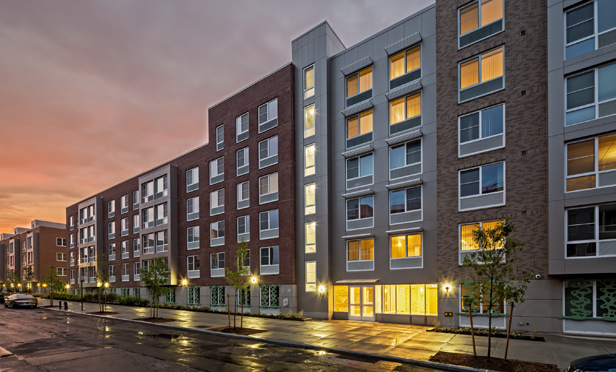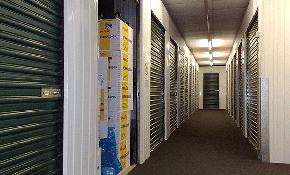 Bluestone: “The building shell is forever. The systems change all the time.”
Bluestone: “The building shell is forever. The systems change all the time.”
BROOKLYN, NY—Affordable housing has a look to it. That is, it did before one developer set traditional concepts on their collective ear. In the process, this 2016 National Association of Home BuildersPillars of the Industry finalist achieved some very impressive goals in the area of sustainability.
(To register for the awards presentation, click here.)
This Week’s Project: Prospect Plaza Site 1 City: Brooklyn, NY Award Category: Best Example of Green Building Concepts Developer: Blue Sea Development Co. Architect: Dattner Architects
Mission: “When you drive around most urban areas in the country you can spot most public housing stock from a mile away.” So says Les Bluestone of Blue Sea Development Co., an advocate of the Hope VI public housing program. “The purpose was to revitalize or replace existing public housing stock with new and more human-scaled developments.”
The traditional affordable housing project consists of tall towers around some sort of plaza space, he says. When he refers to a more human-scale, he’s acknowledging that that traditional design “is being revisited to bring the 15- or 20-story building down to something more contextual to the neighborhood and the occupants.”
And so it was at Prospect Plaza here that older buildings were torn down and the City–and therefore, Blue Sea–began with a clean slate. The other challenge at Prospect Plaza was to bring a new degree of sustainability to the built environment. Well, frankly, this was not so much of a challenge owing to the fact that the developer had at least a decade-long track record of delivering LEED-certified green projects.
Execution: To address the human scale of Prospect Park, the developer took advantage of all of the available acreage to create lower-height buildings. Site 1 now consists of one six-story elevator building plus a series of townhomes providing a total of about 110 units of affordable housing. “We brought it all down by less than half in height and we cover more area,” he explains.
For the sustainability portion of the program, Bluestone and company relied on their experience. “It’s not that we’re so smart or ingenious or have some secret formula,” he tells GlobeSt.com. “The first few we did under an affordable housing budget were tough. But after a while you realize that it isn’t about the bells and whistles as much as it is about attention to detail.”
And along the way, a certain philosophy of green emerged. “The building shell is forever,” says Bluestone. “The systems change all the time. With limited dollars in the affordable housing world, making a well-insulated and airtight building proved to be the most efficient place to put our energy and our dollars. We can come out and replace boilers down the line or change lighting fixtures and pumps, but the walls of the building are there forever.”
As a result, the project features such upgrades as triple-glazed tilt-turn windows and direct venting. Rather than a central conduit leading up to a roof-mounted mushroom-style vent, Bluestone provided “individual fans in each apartment that go directly outside,” he says.
In terms of what the coolest piece of equipment is, Bluestone differentiates what’s cool to the developer from what’s cool to the tenant.
For the developer, it’s the self-programming thermostats with occupancy sensors. “You wake up in the morning and you warm the room, then you cut the temperature back at the end of the day and then repeat,” he explains. “You do this a few times and between the thermostat memorizing the settings plus the sensor that detects when you’re in the apartment, it creates a program based on your habits. Eventually you don’t have to touch the thermostat at all.”
For the tenants, he says, it’s probably the home energy monitors that “give occupants a real-time display in dollars and cents of their electricity use. They can watch their costs per hour or month. It helps in a little behavior modification beyond parents yelling at kids to turn the lights off.”
Conservation was a key not only in design but in construction as well, and much construction waste was avoided in large part through the use of “precast panels for the floors and walls,” says Bluestone, “and in this particular building, it was our second use of modular bathrooms. Paint, medicine cabinets towel rods, fixtures, all were installed off site.”
End Game: There were two Certificates of Occupancy required for Site 1 of Prospect Plaza, says Bluestone, one for the elevator building and one for the townhomes. The latter of these came in April of this yearand, after receiving 41,000 applications for the 110 available units, the project is now 100% occupied.
Prospect Plaza is also a LEED Platinum, NGBS Gold, Energy Star-certified apartment complex. No wonder. “The standard that all engineers design to is ASHRAE, and currently we’re on average 28% better than the new ASHRAE standard,” he explains. The waste reduction measures used in the construction process alone helped the project achieve a 94% construction-waste diversion rate.
But there’s more. As the NAHB application explains, Prospect Plaza “was awarded the first national Active Design Verified certification for affordable housing from the Partnership for a Healthier America, headed by Michelle Obama.”
It’s also the subject of a Mt. Sinai School of Medicine study on long-term health benefits of living in a green building.

















 Copyright © 2024 ALM Global, LLC. All Rights Reserved.
Copyright © 2024 ALM Global, LLC. All Rights Reserved.